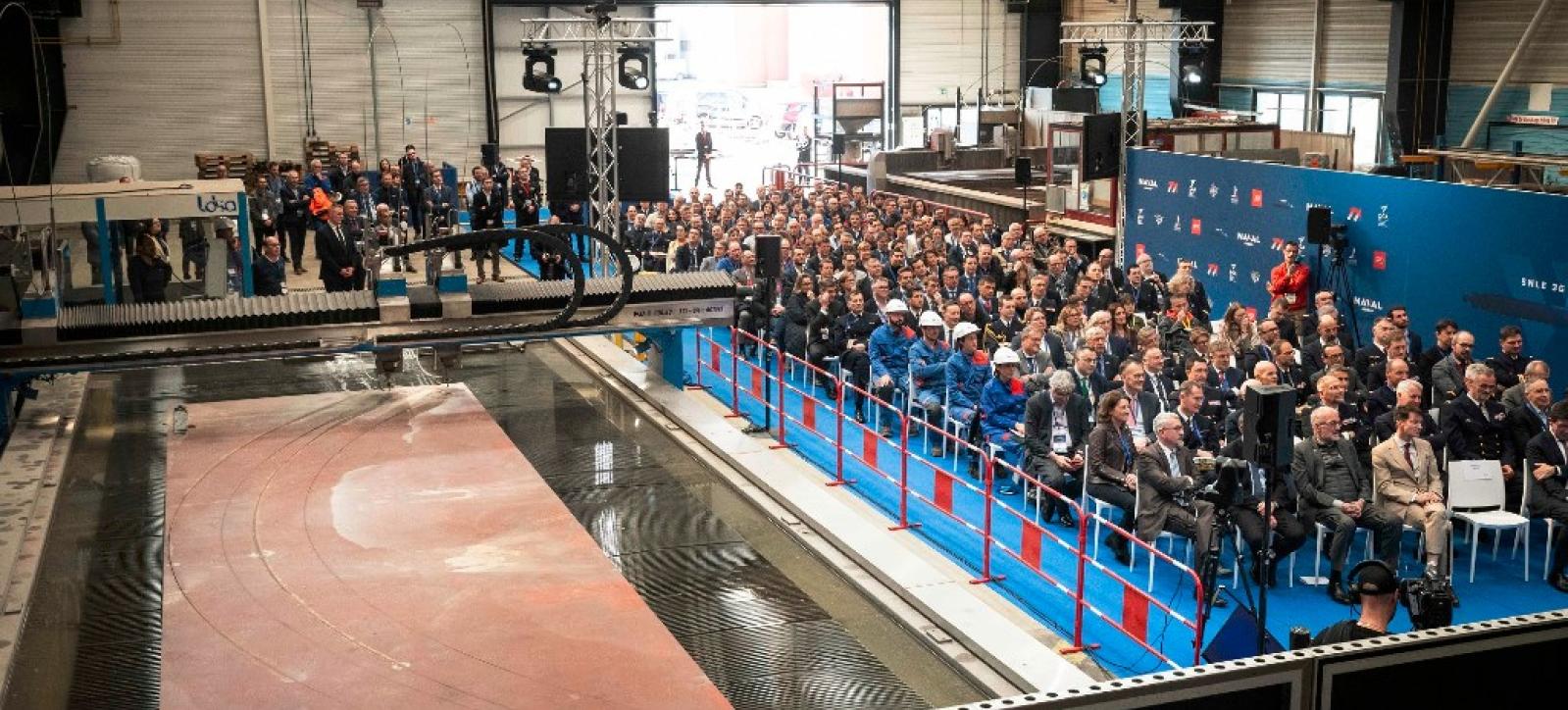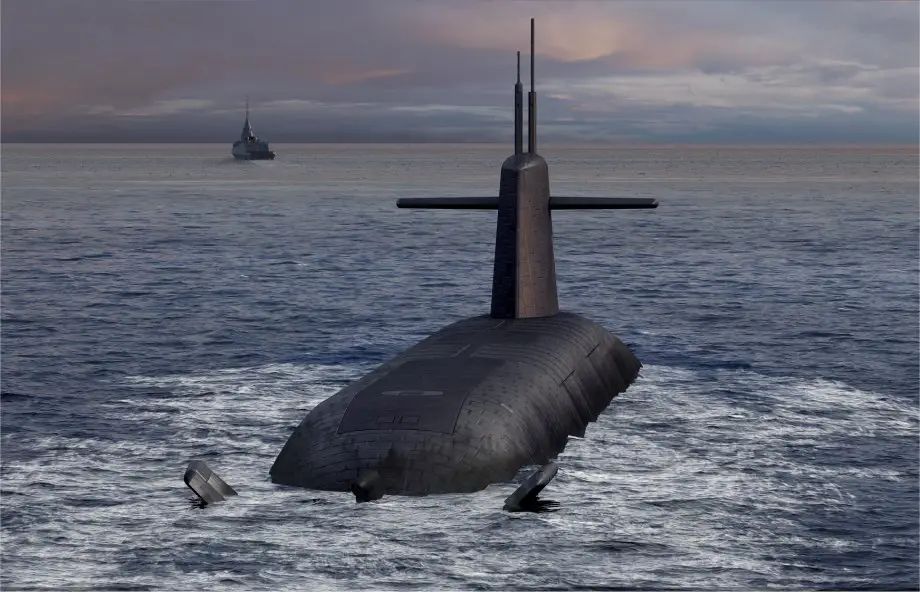On Wednesday, March 20th, at the French shipyard of Naval Group in Cherbourg, a steel cutting ceremony was held for the first strategic submarine of a new generation being built as part of the SNLE 3G (Sous-Marin Nucléaire Lanceur d’Engins de 3ème Génération) program, which was formally launched on February 19, 2021.
Pierre Éric Pommellet, CEO of Naval Group, said:
We are proud to symbolically launch the production of the hull of the first 3rd-generation SSBN today, alongside the DGA, the French Navy, the Atomic Energy Commission and Technicatome, as well as all our state and industrial partners. Through this major program, Naval Group is fully committed to serving French sovereignty and nuclear deterrence, by mobilizing all its skills, talents and industrial resources, and by drawing on a solid defense industrial and technological base, spread across the country.
The first contract, continuing the program, was signed in February 2021 and covers research and development until the end of 2025, as well as long-lead-time orders, production of the first hull sections and machinery for the first submarine, and adaptation of Naval Group’s production technology resources to the program’s specific requirements. Assembly of the sections of the first submarine is scheduled for 2026–2027, with the launch of the complete prototype unit planned for the beginning of the 2030s.
Production of the main components of the naval nuclear propulsion system and power transmission, particularly the reactor for the first SNLE 3G, has already begun at the Naval Group facility in Nantes-Indret. They are responsible for supplying turbo-generator and emergency diesel generator modules, as well as nuclear reactor modules. The pressurized water reactors, designated K22 with a power of 220 MW each (equivalent to 300,000 horsepower), will be provided by the company TechnicAtome (the same reactors will also power the future aircraft carrier codenamed PA NG).
The facilities in Angoulême-Ruelle will design and build equipment such as torpedo and ballistic missile launchers, masts for radio-electronic and communication systems, and fire control systems. The research center in Ollioules will design communication and information exchange systems, as well as design and integrate the combat system architecture and ship control system, while the center in Bagneux will focus on various program management activities. Additionally, the facilities in Lorient and Brest will participate in ship projects, composite component production, operational support programs, and ballistic missile launcher testing in Cherbourg. The number of subcontractors is 400 entities, with the French industry accounting for almost 90% of the program’s value. The program will create approximately 3000 highly skilled jobs.
As part of the SNLE 3G program, four submarines will be built to perform nuclear deterrence patrols until 2090. They will be part of the ESNA Squadron (Escadrille des Sous-Marins Nucléaires d’Attaque) within the maritime strategic forces FOST (Force océanique stratégique). They are expected to enter service between 2035 and 2050, replacing the four Le Triomphant-class submarines: Le Triomphant (S616), Téméraire (S617), Le Vigilant (S618), and Le Terrible (S619), with each replacement occurring every five years.
According to current information, the submarines are expected to be approximately 150 meters long with an underwater displacement of around 15,000 tons. Their main armament will consist of 16 sea-launched ballistic missiles M51.3, each carrying 6-10 thermonuclear TNO (Tête nucléaire océanique) warheads with a yield of 150 kT, with a range of over 11,000 km.
For self-defense, the submarines will be equipped with launchers for heavy torpedoes F21 Artemis caliber 533 mm, also capable of launching anti-ship missiles as well. The crew is expected to number around 100 officers and sailors. Some of the technology will come from the currently constructed Suffren-class next-generation multi-purpose nuclear-powered submarines under the Barracuda program.
The program is estimated to cost around 40 billion euros, although the French Ministry of Armed Forces currently refuses to provide specific numbers, considering it to be too early in the process. It is expected that the new submarines will feature a lower acoustic signature than current units.






Comments
Nobody has commented on this article yet.